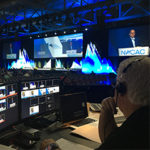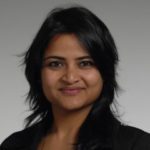
INDUSTRY
Electronic currency — aka cryptocurrency — had various trial runs in the two decades before a person (or persons) calling themselves “Satoshi Nakamoto” introduced Bitcoin in 2009. This encrypted, decentralized currency, almost as mysterious as its creator, has undergone fluctuations in popularity, reputation, and value ever since. Untraceable bitcoins have infamously been used for shady online transactions, and the value of bitcoins fell precipitously earlier this year. However, Bitcoin is still very much in use: As demand has risen, the currency’s value has soared, and bitcoins are now accepted by some online retailers such as Overstock.com and eBay. The business-to-business exchange of bitcoins has also spurred a proliferation of cryptocurrency meetings and events, from the North American Bitcoin Conference (now in its third year) to Crypto-Currency Con to BitcoinExpo 2014, which was organized by London-based CryptoEvents and took place at the Lake Meilan International Convention Center in Shanghai on Sept. 19–21.
ATTENDANCE
The CryptoEvents staff had run several Bitcoin-related gatherings in Europe, but this was the first in China. Attendance was expected to be about 600, according to Andrej Sebesta, CryptoEvents’ main event manager. “China is becoming the most powerful country regarding the Bitcoin industry, so we decided to go over there and provide our attendees and partners with the most complete information not only on China but the whole Asian Bitcoin system,” Sebesta said via phone from Slovenia. “There is something of an information gap.” CryptoEvents recently hosted a Bitcoin conference in Vienna with 350 attendees, and expects several hundred at a business-to-business Bitcoin congress in Brussels this month.
PROGRAM
Sebesta said that the expo’s main goal was “knowledge, interaction, and fun.” The schedule in Shanghai was filled with Asian business leaders, cryptographers, and cryptocurrency experts such as MIT crypto-economist Blake Anderson. Sebesta hoped that workshops and panel sessions would help to counter what he called the media’s habit of “scaring people” over Bitcoin, as well as spur conversation about regulation. “We are challenging [the idea] that this is not a speculative vehicle, but will be a normal part of everyday life,” Sebesta said. Ultimately, he hopes, each event will lead the world closer to the same result: “The number of Bitcoin users will rise.”
– Corin Hirsch
Digital Journalism: CAR Conference

INDUSTRY
A program of Investigative Reporters and Editors (IRE) and the Missouri School of Journalism, the National Institute for Computer-Assisted Reporting (NICAR) offers hands-on training in accessing and analyzing electronic information for working journalists through a variety of programs, including its annual CAR Conference. And while the traditional print- and broadcast-media industry has been subject to layoffs, contractions, and other disruptions over the last decade or more, not so computer-assisted reporting — which has to do with how reporters now routinely collect and analyze information in databases and use geographic information-system mapping to gather material for stories. “It’s kind of the trendy, cool thing right now,” said Stephanie Sinn, IRE’s conference and events director.
ATTENDANCE
That’s reflected in the CAR Conference, whose attendance as of five years ago “was pretty stable” — in the range of 350 to 400 people, according to Sinn. There was a bit of growth at NICAR 2011 in Raleigh, and over the next two years, in St. Louis and Louisville, Kentucky, attendance crept up to 450 to 650. Then at NICAR 2014, held in Baltimore on Feb. 27–March 2, it topped 1,000. Some of that growth Sinn attributes to the conference’s location in an easily accessible destination on the media-saturated East Coast. But not all of it. “We do have a lot of people that haven’t ever done it,” Sinn said, “that are coming to this conference.”
PROGRAM
NICAR’s program is rooted around on-site training rooms, offering hands-on instruction in everything from Excel to highly specialized software. Usually there are four rooms; in Baltimore there were six, and next year in Atlanta there will be eight. “We’ve had so much growth,” Sinn said, “that our [attendance] history has been thrown out the window for the last few years.”
— Christopher Durso
Coffee: SCAA Annual Exposition

INDUSTRY
Many Americans can’t live without their java, which makes coffee a perpetually buoyant industry. In the last few decades, though, coffee drinkers have embraced maple lattes, macchiatos, cold-brewed concoctions, and a mélange of other labor-intensive specialty drinks — spiking the numbers of cafés and the baristas who staff them. Since 1982, the Specialty Coffee Association of America (SCAA) has been the cardinal association for these coffee professionals, setting international standards for roasting, brewing, and cupping. Every year, SCAA holds a string of events, but the largest by far is its annual exposition, which includes tastings, lectures, networking, a trade show, and the United States Barista Championship. SCAA’s 27th expo is scheduled for Seattle’s Washington State Convention Center next April.
ATTENDANCE
SCAA 2014 — also held in Seattle — was “bursting at the seams” with nearly 11,000 attendees and exhibitors, according to Tara Smith, SCAA’s director of marketing and communications. Of note: 43 percent of those attendees were age 35 or younger. Smith expects similar crowds next year, so SCAA is planning a satellite “lecture campus” outside the convention center. “We’re being forced to expand outside of the walls this year,” she said. It’s a markedly different scene from the first SCAA, in 1989, which was “a small gathering of experts,” Smith said. “I think it shows that we’ve been able to put together a meeting that is meaningful to our audience and our members.”
PROGRAM
SCAA’s program is broken into educational tracks — one based around lectures, the other focused on certification — as well as a trade show, an awards ceremony, and the hard-fought Barista Championship. SCAA also works to include those who can’t travel to the expo via online courses. Wannabe attendees also follow loyally on social media; last year, the #SCAA2014 hashtag logged 3 million mentions between Twitter, Instagram, and other social-media sites. “We get Generation Y and the tail end of Generation X,” Smith said. “I can imagine every trade show is preparing themselves for a generational shift, but it’s something that’s at the forefront of our planning.”
– Corin Hirsch
Hydraulic Fracturing: Clean Frac’ing Communication & Technology Conference
INDUSTRY
One clue to the Clean Frac’ing Communication & Technology Conference’s goal of providing a balanced conversation about the controversial process of hydraulic fracturing — also known as “fracking” — can be found in the apostrophe standing in for the “k” in the conference title. Petroleum industry representatives were adamant that they wouldn’t attend a conference with fracking in the name, because opponents of the process, who cite its potential environmental dangers, use it as a pejorative, according to Peter Cook, president and founder of Petroleum Connection, which organizes niche conferences for the oil and gas industry.
On the other hand, Cook also wants to attract those skeptical of hydraulic fracturing — which extracts oil and natural gas from the ground by applying high-pressure chemicals and liquids into rock formations — to the conference. The program is designed as a forum for educating participants on green fracking technology and encouraging communication between oil- and gas-company representatives and others, including representatives of community organizations and public officials charged with regulating the industry. Hydraulic fracturing is “not a black-and-white issue,” Cook said. “We want to bring a viewpoint that looks at both sides.”
ATTENDANCE
The debate over fracking has raged even as the process has become more common. In the United States, more than 43 percent of total oil production and 67 percent of natural-gas production is hydraulically fractured. The first Clean Frac’ing Communication & Technology Conference, held in Colorado last October, drew 60 people; the second one, held this past February in Houston, had about 100 registrants. The conference size is intentionally being kept small, in the 100- to 125-attendee range, Cook said, to facilitate conversation and networking. Other, related programs organized by Petroleum Connection have grown even faster, including the Frac Sand Supply & Logistics Conference, which over three years has more than doubled in size, from 200 to nearly 500 attendees.
PROGRAM
The Clean Frac’ing Communication & Technology Conference “is more of an exclusive event,” Cook said, “drawing decision-makers,” including chief technology officers for petroleum companies and elected officials who issue approvals for permits. The conference has included presentations by academics, state judges, and former U.S. Secretary of the Interior Gale Norton.
– Barbara Palmer

INDUSTRY
Online-community managers are tasked with building communities around new products or ideas — often from scratch. Their job responsibilities range from curating blogs and other social-media channels, to moderating discussion groups, to crowdsourcing new initiatives. The first CMX Summit, held at Dogpatch Studios in San Francisco this past February, explored the psychology of communities as well as how to create and grow them. “Over the last five years, I’ve seen vast, billion-dollar companies established around community — things like Airbnb, Lyft, and Kickstarter,” said David Spinks, the summit’s co-founder, who also runs the popular The Community Manager website. “All of these companies rely on people communicating with each other, and with that we start to see a lot more community professionals.”
ATTENDANCE
More than 300 community managers attended CMX in February, with a follow-up in New York City in June drawing more than 250. A third CMX event is slated for next month in San Francisco; pre-sale tickets sold out in four hours. And those numbers don’t take into account the program’s online audience. About 300 to 400 people tuned in to the livestream or accessed archived footage for each CMX Summit, according to Spinks, while the #cmxsummit hashtag became the second most-trending topic on Twitter on the first day of the New York City program — second only to the World Cup.
PROGRAM
Robin Dreeke, former head of the FBI Behavioral Analysis Program, has twice headlined the CMX Summit. His insights on building trust within communities lit up the Twitterverse when he spoke at the New York City program. Another speaker of note was Tina Roth Eisenberg, the founder of Creative Mornings, a TED-style lecture series that has been spun off in cities across the globe. Other CMX sessions offer actionable strategies for turning community participants into customers, nurturing a grassroots community, and building platforms to maximize user engagement.
– Kate Mulcrone



